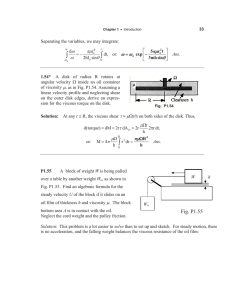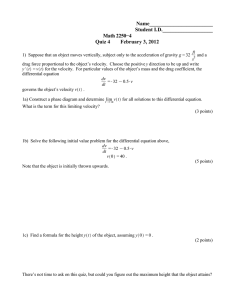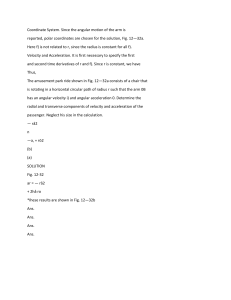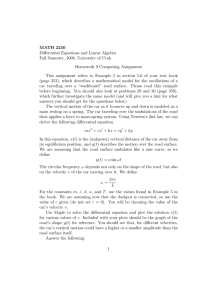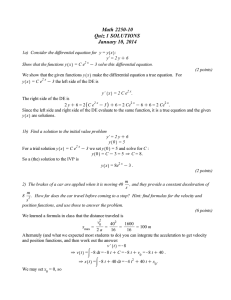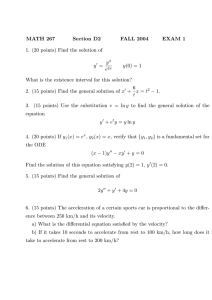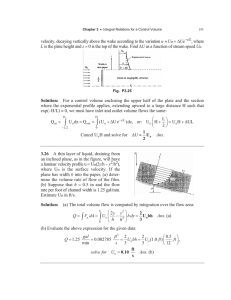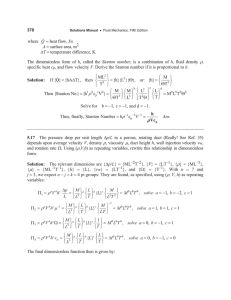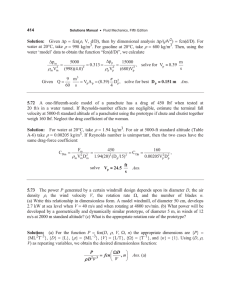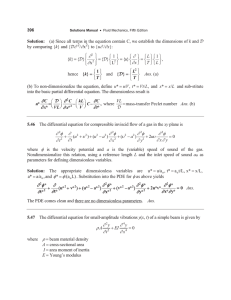: At r r ,
advertisement
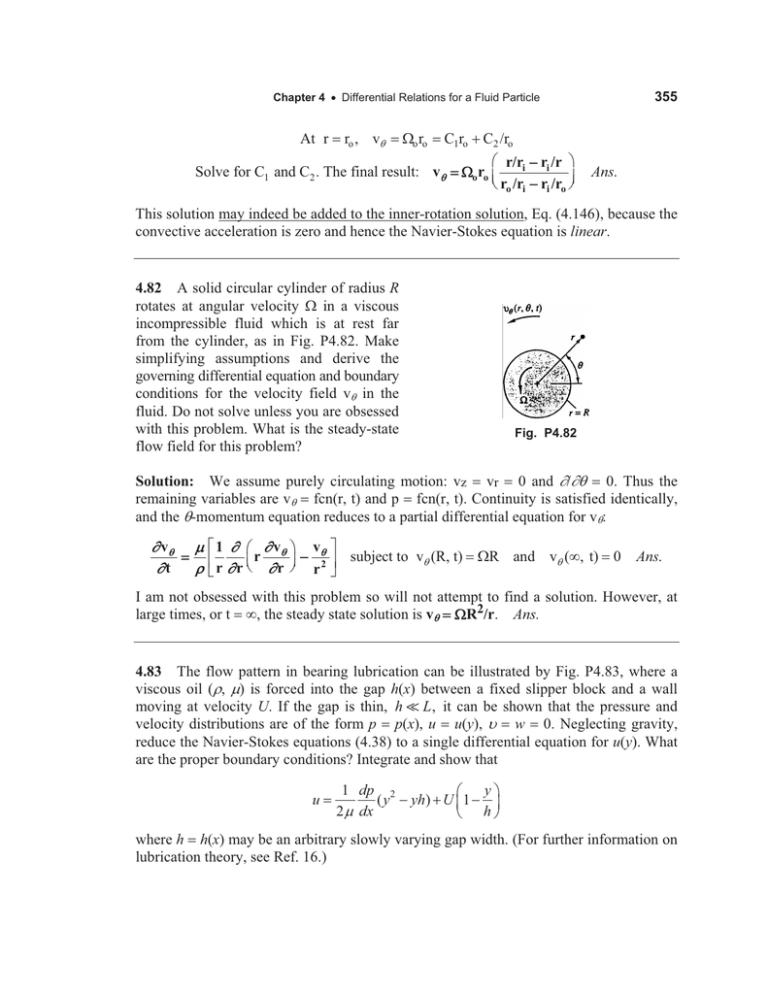
355 Chapter 4 x Differential Relations for a Fluid Particle At r ro , vT :o ro C1ro C2 /ro Solve for C1 and C2 . The final result: vT § r/ri ri /r · :o ro ¨ © ro /ri ri /ro ¸¹ Ans. This solution may indeed be added to the inner-rotation solution, Eq. (4.146), because the convective acceleration is zero and hence the Navier-Stokes equation is linear. 4.82 A solid circular cylinder of radius R rotates at angular velocity : in a viscous incompressible fluid which is at rest far from the cylinder, as in Fig. P4.82. Make simplifying assumptions and derive the governing differential equation and boundary conditions for the velocity field vT in the fluid. Do not solve unless you are obsessed with this problem. What is the steady-state flow field for this problem? Fig. P4.82 Solution: We assume purely circulating motion: vz vr 0 and w/wT 0. Thus the remaining variables are vT fcn(r, t) and p fcn(r, t). Continuity is satisfied identically, and the T-momentum equation reduces to a partial differential equation for vT: w vT wt P U ª 1 w § w vT · vT º « r w r ¨© r w r ¸¹ r 2 » subject to vT (R, t) :R and vT (f, t) 0 ¬ ¼ Ans. I am not obsessed with this problem so will not attempt to find a solution. However, at large times, or t f, the steady state solution is vT :R2/r. Ans. 4.83 The flow pattern in bearing lubrication can be illustrated by Fig. P4.83, where a viscous oil (U, P) is forced into the gap h(x) between a fixed slipper block and a wall moving at velocity U. If the gap is thin, h L , it can be shown that the pressure and velocity distributions are of the form p p(x), u u(y), X w 0. Neglecting gravity, reduce the Navier-Stokes equations (4.38) to a single differential equation for u(y). What are the proper boundary conditions? Integrate and show that u 1 dp 2 y· § ( y yh ) U ¨ 1 ¸ 2 P dx © h¹ where h h(x) may be an arbitrary slowly varying gap width. (For further information on lubrication theory, see Ref. 16.)

